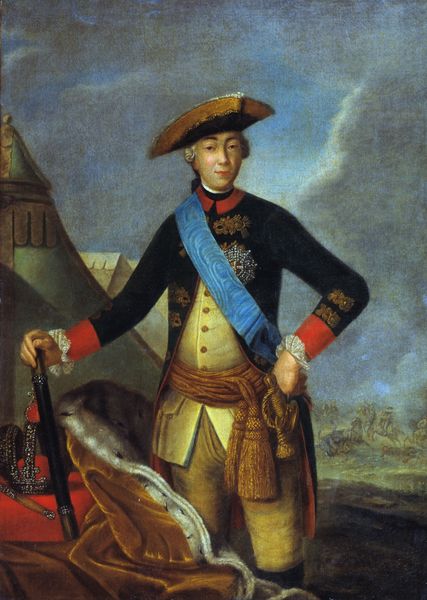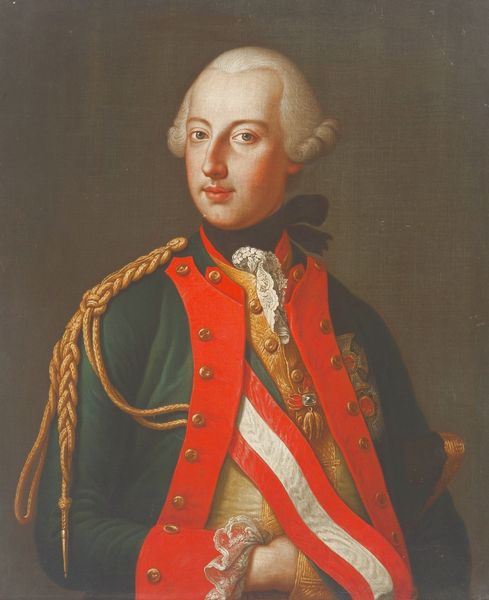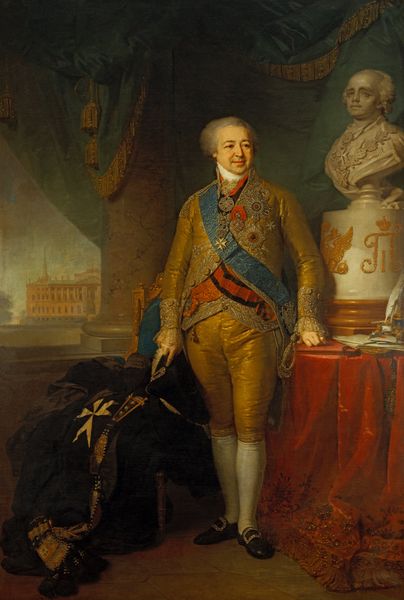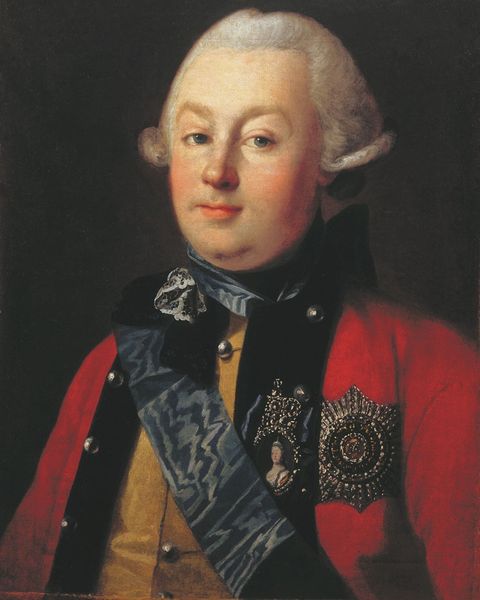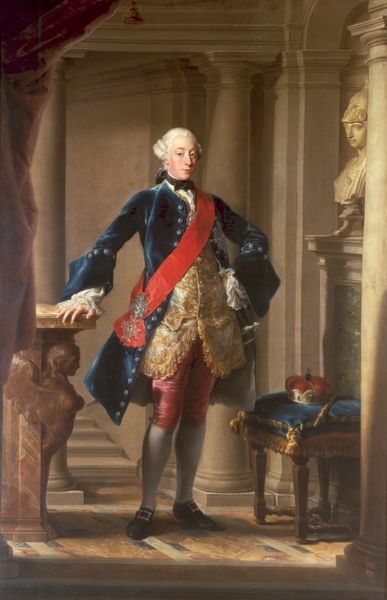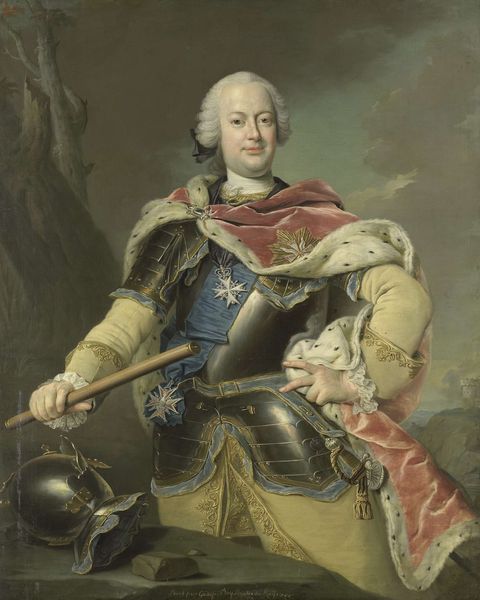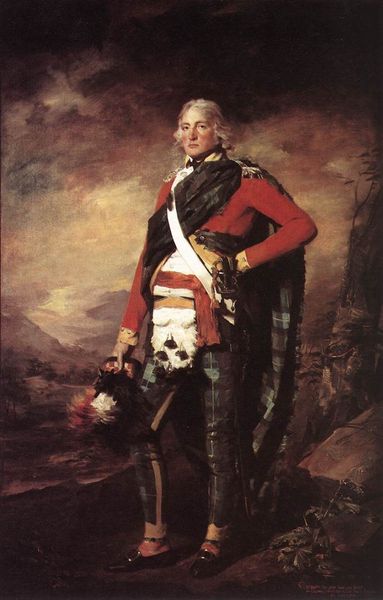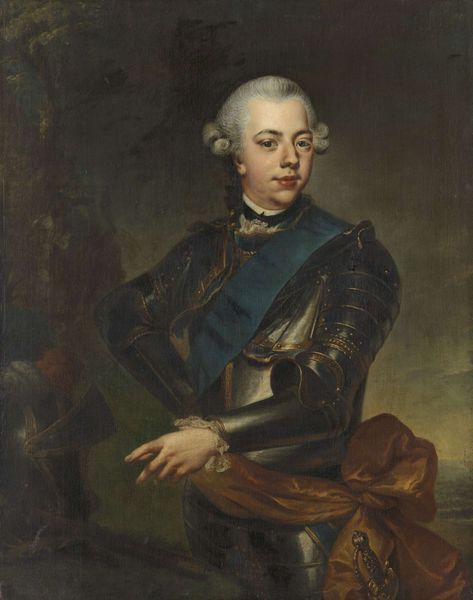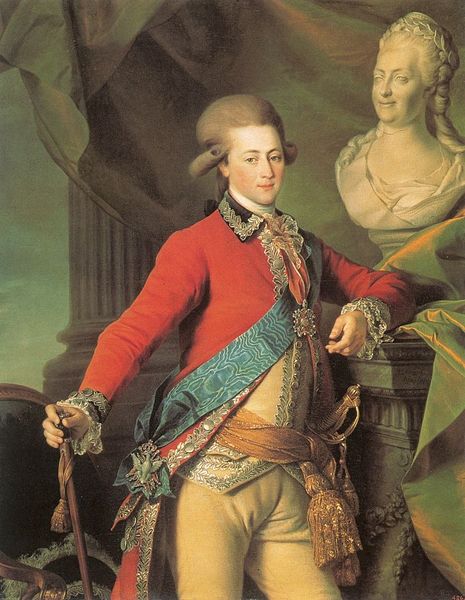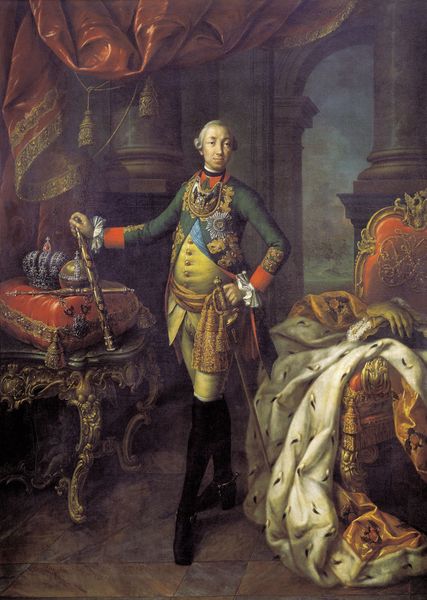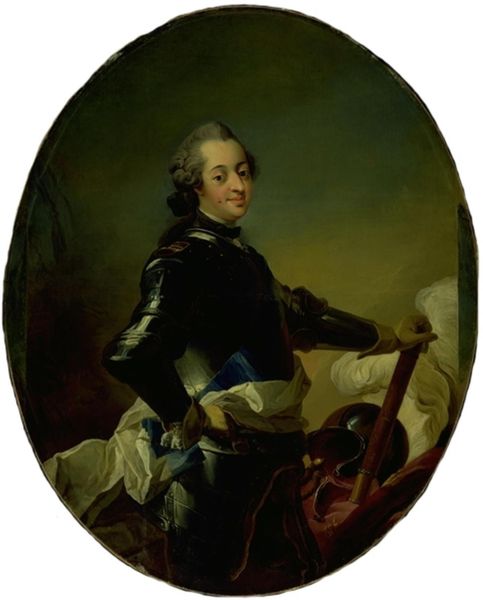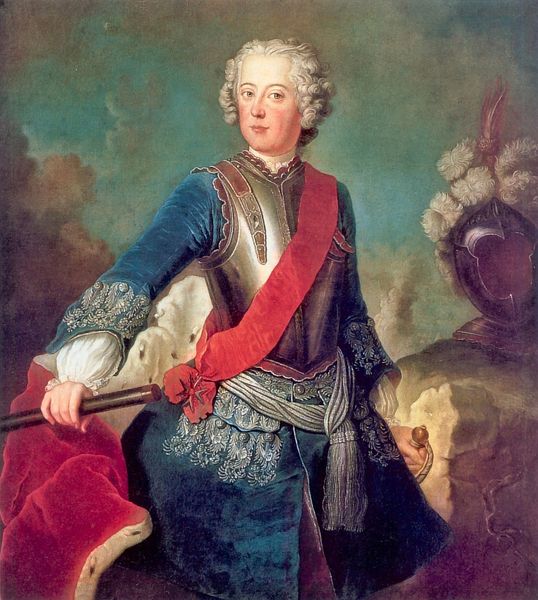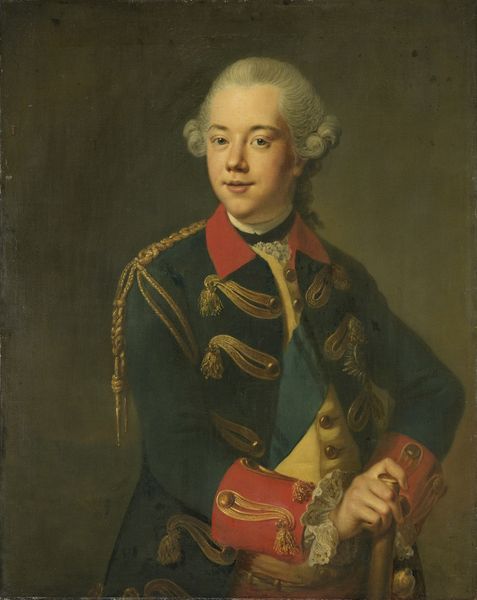
painting
#
portrait
#
baroque
#
painting
#
history-painting
#
academic-art
Copyright: Public domain
Curator: Here we have Antoine Pesne’s “Prince Augustus William of Prussia,” a portrait painted around 1750. He seems quite commanding in this portrait. Editor: The subject seems to be caught between a stoic rigidity and a relaxed amiability, doesn’t he? The cool blues of his baton are really striking against the warmer, earthen tones behind him. Curator: Well, considering Augustus William was a prince in the Hohenzollern dynasty and brother to Frederick the Great, the air of authority is deliberate, projecting power through representation, right down to his garb and confident hand gesture. Editor: Agreed. Semiotically, those accoutrements are signifiers of power: the polished breastplate, the flowing sash, and that blue baton you mentioned. It’s a textbook example of how symbolic objects function within the framework of portraiture to assert the sitter's status. Curator: Absolutely. The artwork serves not just as a likeness, but also as a document of dynastic lineage and Prussian power, reflecting the societal hierarchy of the time. I am fascinated by the power dynamics this image perpetuates but also subtly challenges given that Augustus William’s relationship with his brother, Frederick the Great, was rocky, marked by military failures. Editor: A fascinating counterpoint! But if we return to the purely visual elements, observe the artist’s ability to depict light and shadow playing across the armor. Note that the surface detail in the fabric shows his adept ability to capture materiality within the painting itself. The rendering of texture really grounds the image, almost defying its function as an emblem of abstract power. Curator: Yet even the textures play into the societal script! The rich fabrics speak to economic power and luxury, reinforcing the Prince’s status. In many ways it reaffirms prevailing power structures even when we may want it to question them. Editor: A balance, perhaps, that's cleverly wrought, where material execution belies ideological intent? Curator: Perhaps, highlighting art’s inevitable entanglement in these dynamics. Editor: Yes, in dissecting the art object in and of itself, the painting opens to more expansive readings. Curator: Indeed, offering insights that move beyond a traditional view of representation.
Comments
No comments
Be the first to comment and join the conversation on the ultimate creative platform.
